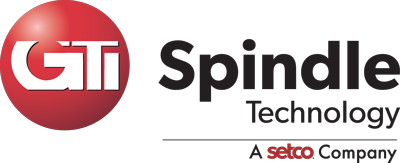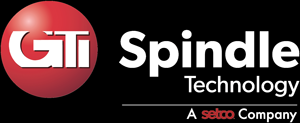Implementing a PM program can be tough. Despite its proven success, many companies have been operating the same way for over 50 years and don’t know where to start. Understanding where to start and where to focus is critical. The intention of this post is to give insight to start and sustain an effective program using today’s technology and devices. It seems only yesterday that we had to pull over to pay phones, stop by the fax machines, or even mail a letter to get things done. In the past 10 to 15 years technology has drastically changed the way business is done.
All of us are now equipped with a device that can receive emails, texts, video calls and run powerful applications. This technology has brought us much closer with each other and allows us to share data far quicker than ever before. We are now entering another level of data sharing using the Internet. Unlike the past we are now able to send data off to a cloud storage environment. Once sent authorized personnel can view the data in real time. This fundamental change provides many advantages especially when we apply it to predictive maintenance.
For example, a maintenance professional is collecting data from assets and finds something drastically wrong that needs attention. With today’s technology he has more options at his fingertips than before. He can send the information to the cloud with an alert attached. Authorized personal will get an alarm about the problematic asset. He can also email or text this data to a decision-maker for immediate action. In the past no matter how the professional was collecting the data he would have to wait until he was done with his route. Then go back to a computer to upload the data or do further analysis. Those still using outdated technology may forget these emergencies as that problematic asset is just one of many assets data was collected for that day. Unless the professional actually leaves his post to alert a subordinate or decision maker that emergency will be forgotten.
This example is just a drop in the bucket of what we all are experiencing in our digital lives. Not too long ago if you wanted to send a picture you had to lick a stamp and send it. Now we take a picture, type a few letters of an email or text address and hit send. It is astounding how far we’ve come! This sends a clear message that this post is intended to demonstrate. Technology is catching up with industry and predictive maintenance and there are some great benefits for those that choose to utilize it.
The modern day tablet including Apple’s iPad, are very powerful computers. We all understand the fascination of absorbing content on these wonderful devices, but it gets forgotten that they are also used for collecting data and getting work done. They are very portable and almost always connected to the Internet. Thousands of companies have adopted tablets for filling out purchase orders, forms and many other daily tasks by workers collecting data. One of the most insightful things that leading companies have realized is that most people already understand how to use the operating system and do not require training to work with tablets and smart phones.
These devices provide a great foundation for those in our industry. Many companies are building on this strong foundation and adding complex sensors and tools to the equation. Tablets can even hook into sensors that enable vibration analysis. Vibration analysis is one of the leading measurements taken in the predictive maintenance community. It has proven itself over and over again to be a method to detect unbalance, misalignment, bent shafts, eccentric rotors, resonance, mechanical looseness, oil whirl, bearing failures, gear mesh, motor problems and more.
Most modern analyzers also have balancing capability to correct vibration issues related to unbalance. More importantly data collectors are designed to trend data overtime to know exactly when failures will occur. Another useful tool is infrared thermography. It’s used to measure temperature to determine machines operating condition and detect thermal anomalies and areas that are hotter or colder than they should be. Infrared practices can be used to detect problems in electrical switch gear, gearboxes, electrical substations, transmissions, circuit breaker panels, motors, bearings, steam lines, and other important industrial components. This technology also aids in letting us know when important assets are going to fail.
Motor condition analysis provides another way to implement predictive maintenance. Circuit analysis and power readings of the motor windings and motor rotor can show important information about the running condition and general health of the motor. As these devices gain popularity, companies are adopting ways to use their simplicity, portability and connectivity to accomplish everyday business tasks. We have seen them used to collect credit card information, bar code scans, photos, custom reports for field engineers, and even navigation recorders for pilots.
Many believe that a dedicated device provides more than a multipurpose device. Why would someone opt for a tablet computer or smart phone instead of a dedicated electronic measuring device?
#1 – All of the features that cannot be found on a dedicated measuring device. These include emails, photos, notes, phone calls, texts, video conferencing, web searches, storage and viewing of asset manuals, blueprints, maps, and much more.
#2 – Ease of use
#3 – Multiple sensors and applications on one platform
#4 – Portability and durability
#5 – Internet connectivity
#6 – Continually updated software
#7 – Security options never available on other devices, to remote wipe data or recover the device.
#8 – Ability to destroy the device and still recover data from a secure cloud or server.
This list of advantages showcase why these devices are the platform of the future. Not only for the reasons mentioned, but also because our youth is using and learning on them in our schools.
There are only a few companies utilizing these external tools and sensors. There will be many to follow with the clear advantages they provide. Currently, FLIR has added the ability to view their inferred cameras. GTI Spindle Technology has added vibration analysis, temperature, precision balancing and alignment. Red Fish Instruments has added multiple sensors to the multimeter and enabled Fieldpiece Accessory Heads to be used on smart devices. Osmium has a full oscilloscope device. There are several others on the web, as well as, talks about future ideas.
In closing, I would like to state that the introduction of these new devices into the predictive maintenance and other data collection fields are welcomed. Many older devices can discourage companies from investing in the technology due to the expense and complexity. These new devices carry a much lower price point, are learning tools, and are data collectors. They are also accepted with open arms by the masses.

